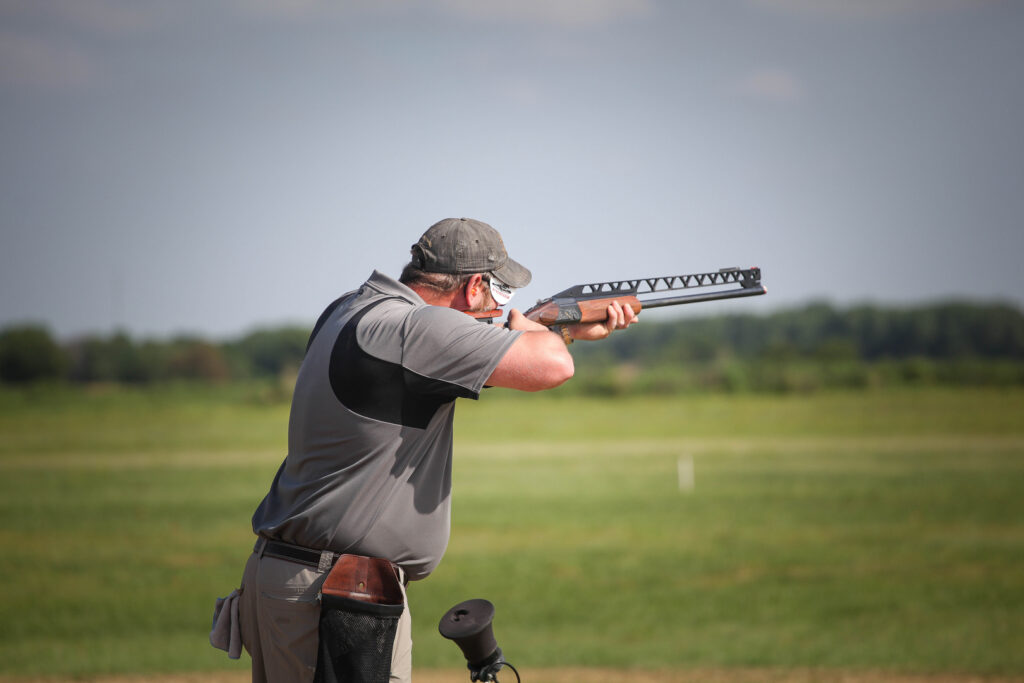We’ve spent time on this but in order to compliment this whole video… I’m going to post Biden’s Speach, word for word, here below…
It. Is…. Oof…
President Biden, from WhiteHouse.Gov
Advertisement — Continue Reading Below
Thank you, General. Let me — before I begin, thank the participants in our roundtable today: two mayors — three mayors, chiefs of police, attorneys general, and community organizers who have been doing significant work in bringing down violent crime in their communities. There is no one — one answer that fits everything. And it’s about being engaged and multiple organizations being engaged.
So, I want to thank you for the time you spent with us today. And I warned you: I’m coming back at you again for more information. (Laughter.)
And we just met, as a I said, with a bipartisan group of mayors, law enforcement, and community leaders. And we discussed a comprehensive strategy that I’m releasing today to combat the epidemic of gun violence and other violent crime that we’ve been seeing in our country for far too long, that has spiked since the start of the pandemic over a year ago.
Crime has — historically rises during the summer. And as we emerge from this pandemic with the country opening back up again, the traditional summer’s — summer spike may even be more pronounced than it usually would be.
For folks at home, here’s what you need to know: I’ve been at this a long time and there are things we know that work that reduce gun violence and violent crime, and things that we don’t know about. But things we know about: Background checks for purchasing a firearm are important; a ban on assault weapons and high-capacity magazines — no one needs to have a weapon that can fire over 30, 40, 50, even up to 100 rounds unless you think the deer are wearing Kevlar vests or something; community policing and programs that keep neighborhoods safe and keep folks out of trouble.
These efforts worked. They saved lives. But over time, these policies were gutted and were woefully underfunded.
In our conversation today, we talked about our strategy to supercharge what works while we continue to push the Congress to act on sensible gun violence legislation.
First, we discussed cracking down, as you heard from the Attorney General, on rogue gun dealers. We know that if there is a strict enforcement of background checks, then fewer guns get into the hands of criminals. Background checks have thus far kept more than 3 million guns out of the hands of felons — convicted felons, fugitives, domestic abusers, and others prohibited from being able to purchase a gun. And there are still too many loopholes in that system.
And, today, enough rogue gun dealers feel like they can get away with selling guns to people who aren’t legally allowed to own them.
And I might add: The Second Amendment, from the day it was passed, limited the type of people who could own a gun and what type of weapon you could own. You couldn’t buy a cannon.
Those who say the blood of lib- — “the blood of patriots,” you know, and all the stuff about how we’re going to have to move against the government. Well, the tree of liberty is not watered with the blood of patriots. What’s happened is that there have never been — if you wanted or if you think you need to have weapons to take on the government, you need F-15s and maybe some nuclear weapons.
The point is that there has always been the ability to limit — rationally limit the type of weapon that can be owned and who can own it.
The last time we had data on this issue of who is purchasing guns was more than 20 years ago. Five percent of gun dealers — it turns out, in the study we did — showed that 90 percent of illegal guns were found at the crime scenes sold by 5 percent of gun dealers. Five percent sold 90 percent of the guns found at crime scenes.
And the — these merchants of death are breaking the law for profit. They’re selling guns that are killing innocent people. It’s wrong. It’s unacceptable. And as the Attorney General said, we’re going to crack down on those gun dealers and the violent criminals they knowingly arm.
In April, I announced that the Justice Department is going to be issuing an annual report on gun trafficking so we can update that data.
Today, the Department is announcing, as I just did, a major crackdown on — to stem the flow of guns used to commit violent crimes. It’s zero tolerance for gun dealers who willfully violate key existing laws and regulations. Let me repeat: zero tolerance.
If you willfully sell a gun to someone who is prohibited from possessing it, if you willfully fail to run a background check, if you willfully falsify a record, if you willfully fail to cooperate with the tracing requests or inspections, my message to you is this: We’ll find you, and we will seek your license to sell guns. We’ll make sure you can’t sell death and mayhem on our streets. It’s an outrage. It has to end, and we’ll end it. Period.
Second, we discussed disrupting illegal gun trafficking. Now, the gun lobby wants you to believe that cities that are the toughest gun — have the toughest gun laws still have the highest rates of gun violence, as was pointed out by the group we had today in our roundtable. They — the violence is so — they argue, “Why do you need those gun laws if they don’t work in cities that have tough laws?” Don’t believe it.
Here’s the truth: Today’s conversation with Mayor Scott of Baltimore, for example, echoed what we know to be the case, and you hear it from mayors across the country. Mayors have the power to help shape and enforce the laws in their cities, but they can’t control the laws in neighboring cities and states, even though the gun legally bought there is — often ends up in their streets.
Mayor Scott says that 80 percent of the guns in Baltimore were acquired outside the city — outside the city. There’s little he can do about that, so we have to act.
As part of our strategy, the Justice Department is creating five new strike forces to crack down on illegal gun trafficking in the corridors supplying weapons to cities like New York; Chicago; Los Angeles; Washington, D.C.; and the Bay Area.
With these strike forces, local and federal law enforcement and prosecutors are going to be able to better coordinate the prosecution of illegal gun trafficking across city and state lines, so illegal guns sold from the back door of a gun shop in Virginia don’t end up at a murder scene in Baltimore. And if they do, then local and federal law enforcement can better coordinate to trace illegal gun sales back to the shady gun dealer and hold them accountable.
Police Chief Murray of the Baltimore [sic] — excuse me, Police Chief Merritt [sic] — Police Chief Murphy Paul of Baton Rouge, Louisiana, talked about how he’s coordinating more closely with the Bureau of Alcohol, Tobacco, and Firearms; the ATF; and the Federal Bureau of Investigation — the FBI — to help take on criminal organizations committing violent crimes in the city.
This kind of coordination is essential to keeping the weapons of war out of the hands of dangerous criminals, fugitives, and gangs, as well as organized crime.
Third, we discussed historic funding — we discussed historic funding for states, cities, and counties, and Tribes for law enforcement and crime prevention. You know, they’ve not only had to fight this pandemic, they’ve also had to deal with economic crisis that has decimated their budgets — forced them to cut essential services, including law enforcement and social services.
And amid the COVID-19 pandemic, they’ve had to deal with a second public health crisis: gun violence. The American Rescue Plan, which we passed in the first 100 days of my administration, is providing much-needed, historic relief to bring back those law enforcement jobs and social service jobs.
Much of this relief has already arrived. The rest is on its way. And we’re now providing more guidance on how they can use the $350 billion nationally that the American Rescue Plan has available to help reduce crime and address the root causes.
For example, cities experiencing an increase in gun violence were able to use the American Rescue Plan dollars to hire police officers needed for community policing and to pay their overtime.
Mayors will also be able to buy crime-fighting technologies, like gunshot detection systems, to better see and stop gun violence in their communities. They can use the funding to scale up wraparound services for the residents as well, including substance abuse and mental health services that we know will make a difference in prevention of crime.
Here’s another example that reminds me of the old saying my mom used to use. She’d say, “An idle mind is the devil’s workshop.” Well, school’s out for the summer. Teenagers are in tough neighborhoods, no — who are in tough neighborhoods — no jobs, more trouble.
We know summer job training — summer jobs, training, and recreation for young people work. They help make sure young people pick up a paycheck instead of a pistol. One study found a Boston summer jobs program for youth reduction reduced violent crimes by 35 percent in Boston.
Another study found that a program that offers high school students in Chicago a good summer job and an adult mentor and behavioral therapy led to a 45 percent drop in violence.
We can invest in more of these programs with the American Rescue Plan. And here’s another thing states, cities, counties, and Tribes can do with that funding: When someone finishes their time in prison, they can’t just give them — we can’t just continue to give them 25 bucks and a bus ticket. They end up right back where they started and got them in trouble in the first place — or no option for being able to provide for access to public housing or for schools or for — for mentors to help them find their way, and the stuff that prevents recidivism and helps them integrate in a society. That’s changing with guidance we’re issuing today.
The American Rescue Plan funding can help formerly incarcerated people get skills training, apprenticeships, and work experience so they can gain stability and security and a chance for a better life, rather than going back to exactly what they left.
Attorney General Greenwald of New Jersey and Mayor Daniel- — and Mayor Daniella Levine Cava of Miami-Dade talked about their efforts to lift up those kinds of communit– their — the kinds of community programs that reduce gun violence, keep communities safe, and make real, positive difference in people’s lives.
And for folks at home, the American Rescue Plan, which is a once-in-a-generation investment to reduce violence in America, is available. I’m proud of it. It means more police officers, more nurses, more counselors, more social workers, more community violence interrupters to help resolve issues before they escalate into crimes.
It means we go after the people who flood our streets with guns and the bad actors who decide to use them to further terrorize the communities. It means saving lives. And Congress should in no way take away this funding. It’s already been appropriated.
In fact, a few weeks ago, the bipartisan United States Conference of Mayors, the National League of Cities, National Association of Counties — they all came out forcefully against efforts to reclaim American Rescue Plan funds that have already been allocated to the state, cities, and counties, and Tribes. This is not a time to turn our backs on law enforcement or our communities.
Fourth, we discussed the need to support community violence intervention. These are local programs that utilize trusted messengers and community members and leaders to work directly with people who are most likely to commit gun crimes or become victims of gun crimes.
We know who they are. They intervene before it’s too late — these — these interrupters — turn down the temperature, halt the cycle of retaliation, connect people to social services. And it works. Community violence intervention programs have shown a reduction in violence of up to 60 percent in many places.
We heard from two community leaders that do this work. Eddie, thank you for coming from Chicago to — you’re really — quite frankly, it was impressive — your presentation. And — and DeVone Boggan from Richmond, California.
Eddie was formerly incarcerated for gun homicide, and DeVone lost his brother to gun violence. And Eddie worked as a violence interrupter. Now he runs a program that provides high-risk men with cognitive behavioral — cognitive behavioral therapy to help them react to the impulses by slowing down rather than following through on the violence. It puts them in — he — puts them in paid jobs to change their trajectory. The program has reduced sh- — has reduced shootings by 40 percent.
DeVone runs a program across California and six other states that enroll high-risk individuals in peace fellowships, complete with intensive mentoring and social services. It’s saving lives. In Sacramento, for example, 91 percent of participants stayed away from gun violence.
States and cities should invest the American Rescue Plan funds in those kinds of anti-violent crime programs. And today, I’m announcing that the White House will be working with 15 jurisdictions that are doing exactly that — from Baltimore to Baton Rouge, and Memphis to Minneapolis — to build up their community violence intervention programs, starting this summer.
And Mayor Steve Allender of Rapid City, South Dakota — a Republican and a former chief of police himself — joined us today and will be a part of this effort to help disrupt cycles of crime and violence in his community and nearby Tribal communities.
We need more mayors to follow and I’m going to be pushing to keep — pushing for more of these proven programs, which are part of the American Jobs Plan and my budget.
Fifth, and I’ll close with this: We talked about the lives we lost — have already been lost and the lives that we can save. We talked about how much pain and loss so many people have experienced and so many people have now accepted as their fate here in America.
We have an opportunity to come together now — as Democrats and Republicans, as fellow Americans — to fulfill the first responsibility of government and our democracy: to keep each other safe. Enough.
That means Congress passing sensible gun prevention, violence prevention initiatives is warra- — is — makes sense: background checks, ban on assault weapons, repeal of the liability shield for gun manufacturers.
It means the Senate reauthorizing the Violence Against Women Act — my proudest legislative accomplishment — to close the so-called “boyfriend loophole” — its “boyfriend and stalking loophole” — to keep guns out of the hands of abusers. We added the provision saying, “If you have a stay-away order — you are stalking someone and you’re told that has to stop — you can’t own a weapon.”
Every single month, an average of 57 women are shot and killed by an intimate partner. We can help stop that.
It means confirming my outstanding nominee for — to lead the AFT — excuse me, the ATF: David Chipman. It’s been without a leader for a while. The top job has been un- — unconfirmed for much too long. A career and distinguished ATF official for 25 years, David is eminently qualified for the job that we desperately need to fill.
As Vice President, I pushed hard to lift the freeze on gun violence research at the C- — the Center for Disease Control, the CDC. Guess what? Why should they not be able to study gun violence and what causes it? But there’s been a block on it. I want to unfreeze that.
As President, my budget doubles funding for the gun violence research at the CDC and the National Institutes of Health — the NIH — to study gun violence as a public health threat that it is.
And while we keep pushing there, Vice President Harris and I also — and our entire administration are continuing to be — will continue taking action where we can. Let’s stop the proliferation of ghost guns, as we announced back in April with the Attorney General.
We need to support the development of smart gun technologies. This doesn’t affect responsible gun owners or Second Amendment rights. It helps keep guns out of the hands of people who shouldn’t have them in the first place, from a child who accidentally picks up a — picks it up, to a burglar or violent criminal trying to steal it and use it.
And we need to keep building on the gun violence and crime-prevention strategy we’re laying out today.
Folks, this shouldn’t be a red or blue issue; it’s an American issue. We’re not changing the Constitution; we’re enforcing it — being reasonable. We’re taking on the bad actors doing bad and dangerous things to our communities and to our country.
Talk to most responsible gun owners and hunters. They’ll tell you there’s no possible justification for having 100 rounds in a magazine of a gun. Like I’ve said before: What do you think, the deer are wearing Kevlar vests?
Responsible gun owners will tell you that there are too many people today who are able to buy a gun but shouldn’t be able to buy a gun.
And these kinds of reasonable reforms have overwhelming support from the American people, including gun owners.
The bottom line is this: Let’s show the world and show ourselves that democracy works and that we can come together as one nation. We can do this and save lives.
So, thank you. God bless you all. And may God protect our troops.
And again, I thank you all for participating. But the bad news for you all is, I’m coming back. I need your continued help. So, thank you very, very much.
And, General, thank you. Appreciate it.















